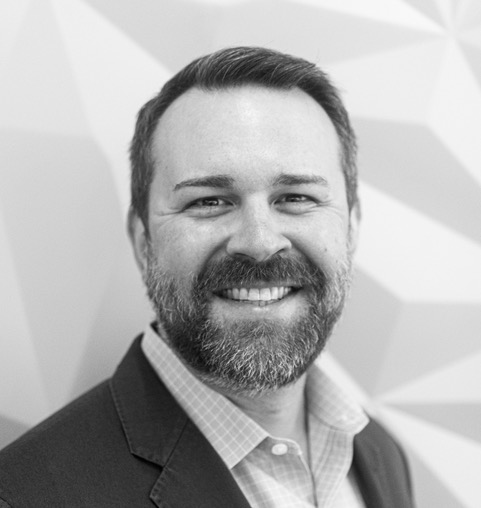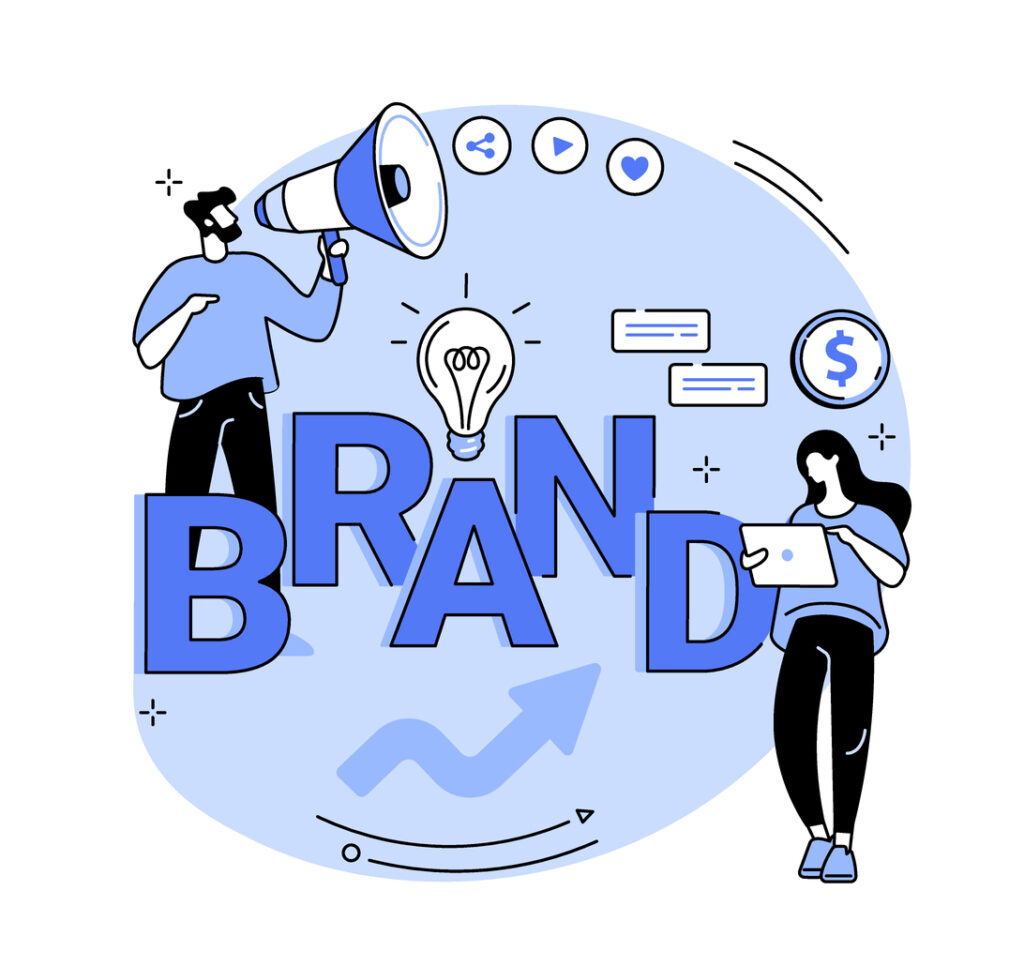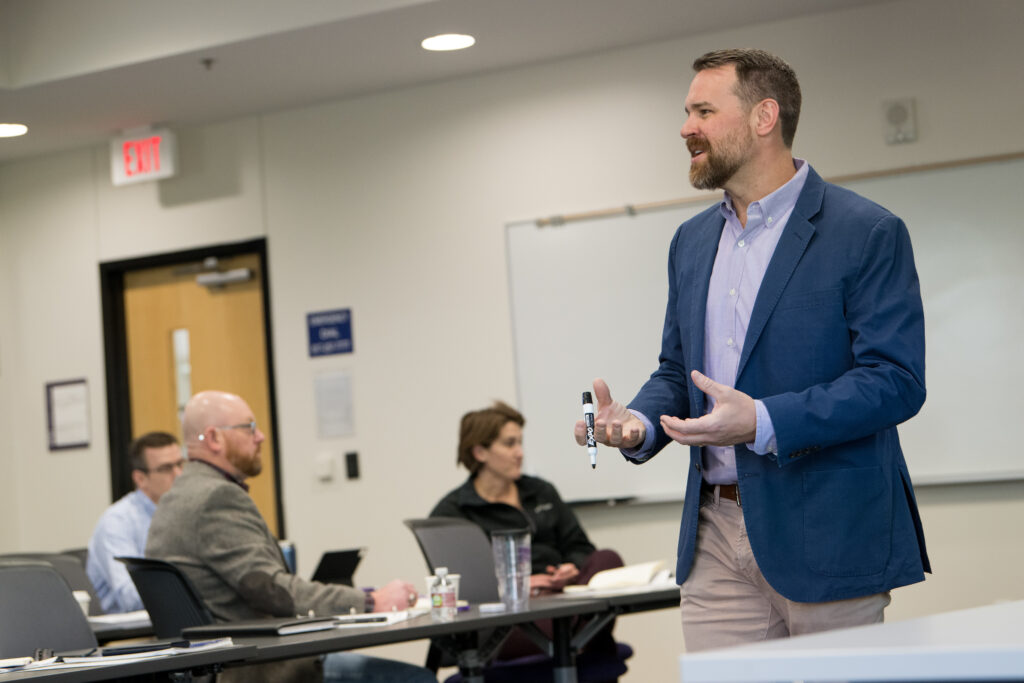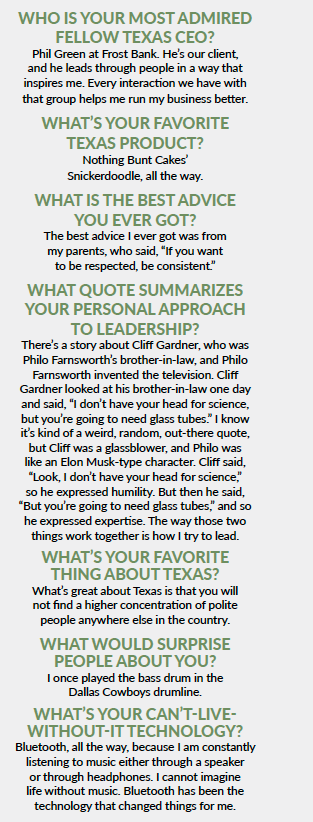Empowering Employee Engagement

MindHandle CEO Eric Harris emphasizes the importance of a people-centric approach.
The Great Resignation was in the spotlight in 2021 as record numbers of employees left jobs, but the days of staying with a single company for an entire career had been diminishing well before COVID-19 arrived. Mid-year 2022, a new Gallup analysis found that nearly half of the American workforce was looking for another job, either actively or passively.
The Gallup analysis identified employee engagement as a prominent factor in the resignation rate. It found the global engagement rate somewhere between 20-34 percent. It also showed that the most important factor in determining whether an employee is engaged or disengaged was the workplace and that an engaged manager-employee relationship was an important factor as “low engagement teams typically endure turnover rates that are 18 percent to 43 percent higher than highly engaged teams.” The cost to replace an employee: one-half to two times their salary.
Enter Eric Harris. Harris is the CEO of MindHandle, an agency specializing in internal communications. He is a self-professed people person who teaches others how to put employees above all else to effectively reduce the speed of the turnover bus and see positive effects on company culture and, ultimately, customer service.

Harris is also an executive education professor at Texas Christian University (TCU) in Ft. Worth. He teaches Storytelling for Executives and Executive Communication and Presence through TCU’s Neeley Executive Education program.
We spoke with Harris about creating brand champions, the importance of aligning values and vision, employee-engagement strategy, and a buzzword of the season, quiet quitting.
Tell us a little bit about your upbringing.
I was raised in north Texas. I actually live in my hometown, Richardson. My family was very nuclear: two kids, a dog, two parents. It was really the postage stamp yard in the suburbs. But my dad was a small business owner and still is a proprietor, and I was just so impressed with him. What I really appreciated was that he could be there for all the important stuff and also run a business. I watched him do that my whole upbringing, and it really spoke to me.
My parents were Yankee transplants. They were from Boston and New Jersey, and so it was kind of fun because we have Italian roots but bloomed in Texas. So, we did chicken cacciatore on Christmas Eve and then brisket and baseball all summer.
Why did you go into advertising?
I went into advertising because I always wanted to. In fact, I wrote my first ad campaign with my uncle, my mom’s brother, when I was like seven years old. He challenged me to write a tagline for candy canes, and I wrote, “Stick it.” And he said, “There’s a bright future for you in advertising.”
How would you define your personal leadership style?
Most importantly, I’d say my style is underpinned by a people-over-profit mentality. So, I prioritize people. You never really have to choose between one or the other, but I bring it back to that often. Like, “What would I do in this situation if I was prioritizing the people instead of the money?” So that defines a lot of it.
If you ask someone on my team, they’d probably say I’m a compassionate listener. I’m restless and impatient. I’m analytical, but I have rounded corners. And I’m really comfortable presenting. I have very little ego about it. I’m not modest. I have no problem standing in front of a crowd and saying, “Here’s what’s going on. Are you with me?”
Who or what had the biggest influence on your own leadership style, and what did you learn from them?
I’m going to go back to Dad on this one. So, it’s not really even about business. It’s that he was my baseball team coach. He was at every single game, coaching for most. He was at every single band performance, marching band and garage band. He was at every single high school activity, banquet. He bought a table for most of them. He and my mom were always there for my sister and me. And that actually taught me how to define success in business because I am a big believer that work is to propel a happy life, not the other way around.
What does MindHandle do? Who are its clients?
MindHandle is an employment branding agency. We like to call ourselves a recovering ad agency because we used to be in the business of commerce. We would do what a typical ad agency would: Super Bowl spots, social media campaigns, print advertising, and point of purchase.
And we had sort of an enlightenment over the last few years and veered courses because we work with primarily large complex restaurant retail brands that have distributed workforces. So, Nothing Bunt Cakes, Topgolf, Chili’s, Texas Health Resources, and Frost Bank are our clients with many thousands of employees. And we have seen—that just the advertising work being what it is—we grew up in that space, and we know how to write those emotionally charged messages and do inspired artwork to connect with people, connecting with consumers emotionally.
But there was a real void for that in internal comms. There are not a lot of advertising quality messages reaching company employees. And we said, “We can help with that.” We always say, “We’re doing for internal comms what mint dentistry did for oral hygiene. We’re making it sexy.”
How would you define the mission or philosophy or ethos of MindHandle as an organization?
We are on a mission to be the world’s most employee-centric ad agency.
And basically, what that means is we believe that a person’s relationship with their employer is a really big deal. We get a strong sense of purpose from what we do for a living. That just is a human truth. You can even look back at many of our last names, for example, come from what our ancestors did for their occupation: Smith, Potter, Trainer. So, an employment brand is way bigger than the logo on our paychecks; it’s how we define who we really are.
f we always only listened to our customers, our brands would appear schizophrenic because the culture of consumerism changes.
Describe an employee-first approach. What does it look like in practice?
In most marketing assignments, the strategy starts with the consumer.
We talk to the people who are buying the product, and then we engineer messages to reach them so they buy with more velocity. With employment branding, we’re taking that mentality, and we’re kind of inverting it because what we’ve seen is that the most successful brands actually begin with the employee perspective.
For example, take REI. They believe and declare publicly that to work here you align with the idea that a life lived outdoors is better. And so, they said, “You know what? Employees, you guys deserve Black Friday off. You should go outside that day instead of being stuck in a retail box.” And that became one of their biggest marketing campaigns of all time. One of the biggest marketing campaigns of all time, the opt-outside movement, was built on understanding their employees and what they wanted. That’s what we mean by employee-first.
If we always only listened to our customers, our brands would appear schizophrenic because the culture of consumerism changes. Cultural shifts happen on a macro scale, but a business’ values shouldn’t change much over time. And they should be reinforced by its employees.
What makes this approach effective in recruiting the right people?
Let’s start with what a brand does. A brand protects price. A brand creates a sense of tribe. It creates an “I’m like that” mentality. But it also repels as well as it attracts. A great brand is going to tell some people maybe I’m not for that brand, just as well as it tells others, “Oh, I’m definitely for that.”
If you look at the convention on recruiting, especially in the retail restaurant space, when someone’s hiring, what do they do? They put up a sign that says, “Now hiring,” and that sign is right next door to another retail location in a strip mall with a sign that says, “Now hiring.” So, there’s literally no differentiation between one place and the other. If I’m an applicant and I pull into the parking lot, I don’t know the difference between the two. I just know both are looking for me. So, when you think about branding the employee-employer relationship, those messages become much more targeted, and they become much more emotionally charged and much more poignant and meaningful to the audience.
So, in recruiting, for example, like the work we did with Raising Cane’s, they weren’t looking for just your run-of-the-mill employee. They were looking for high performers. They wanted the captain of the swim team, first chair oboe. So, we defined and wrote a recruiting campaign centered around the idea of “Chickenthusiasts.” And if you are a Chickenthusiast and want more expertise in your life, like if you’re a high-performing individual, you would identify with that. You pull up at a Raising Cane’s; it says, “Now hiring Chickenthusiasts.” You pull up next door to a Jack in the Box; it says, “Now hiring.” So where are you going to apply?
How does that translate then, on the other end, given the Great Resignation and retaining the right people?
Retention and communication just go hand-in-hand. Suppose you have an organization that communicates the culture meaningfully and consistently, every day. In that case, there are tons of opportunities for employees to reassess and to say, “What is it that makes me proud to work here? Do my values align with the company and where we’re going?”
For example, I’m a people-over-profit person, and if I woke up every day hearing my company communicate about profits and that was all we ever talked about, I’d be out the door. You’re not going to retain me if that’s what’s being communicated. So, it’s about that—the meaning and the consistency—and that’s what leads to retention.
In engaging employees to do their best work, if the conversation always centers on profit, that’s not engaging you. How do you engage someone to do their best work if you’re employee-centric?
There’s kind of a fine line between engagement and retention. They’re really sort of shades of the same thing in reality, but engagement comes down to answering two questions: “Do I know what’s expected of me?” And “How am I doing at that?” It’s really simple.
When we talk about engagement, there are a lot of different tactics that can help answer those two questions. But do I know what’s expected of me? A strong employment brand answers that question by saying, “This is what we believe in as a company and where we’re going.” So, what’s expected of me aligns with what’s expected of the company.
Once we know the answer to what’s expected, we ask ourselves how we’re doing. If you have a strong brand that celebrates what’s important to the company, then employees can answer that question for themselves. Because employees will self-govern, holding their actions up to the company’s beliefs. They’ll ask “Do I feel like I’m doing that? If not, what’s in the way?” And if they are, they’ll continue and engage others.

Where quiet quitting is concerned, how can company leadership combat that trend? It doesn’t sound like something new, maybe just a new name?
Quiet quitting is indeed real, but you might also call it a new name for a very common challenge in business: disengagement. The “quietly disengaged”—a collection of individuals who have elected to deviate from the cultural current, but who are not disruptive about it—has always comprised about half of the workforce. This group nestles between the actively engaged and the actively disengaged, the two most powerful, polar forces in an organization.
The biggest change, however, is in the increase in disengagement among younger employees. Gen Z and younger millennials (under 35) are showing decreases in engagement compared to pre-pandemic levels and are more likely than ever to join the ranks of those quietly going through the motions and refusing to go above and beyond.
This is why the alarms are sounding. Disengagement is not new, but increasing levels of disengagement among a crucial demographic is causing leaders to pay attention and take action.
What is a brand champion, specifically in the retail restaurant space, and why are those kinds of employees important? Is everyone a brand champion? Is that the expectation?
Yeah, boy, that would be awesome. I mean, there are certain companies that really over-index in brand champions. I would point to Chick-fil-A as a great example. Frost Bank, one of our clients, has a very, very high concentration of brand champions.
These are people we define as individuals willing to stand up and defend the brand as important to their way of life. So, they are very vocal about the values. They’re very communicative on behalf of the brand. They refer people to it, whether as customers or as employees. It’s so important in the restaurant and retail space.
Just think about the last time you went to a restaurant. Did you have a server who was interested in conversing with you, proactively recommending new dishes, thinking about your desires, and refilling your glass when it was one-third full? Was your experience one that you could tell was facilitated by someone who was proud to be working where they were?
Or did you have the experience that a lot of us have, especially these days during staffing shortages, where you felt like the server acted like, “I’ll get to you when I get to you, and when I do, we’re not going to engage in conversation and it’s going to be really transactional”? So, a brand champion in that role is critical because brand champions are defining the experience for you and for their coworkers.
How do you create a brand champion? Is it something that just happens, falls in your lap, or are there ways that you can work to instill that passion in your employees and create brand champions?
It starts at the recruiting phase where, if someone was attracted to the brand for specific reasons and those reasons are reinforced throughout their experience, that’s only going to help get them to that championship level. But it’s really communications and branding. You ask anybody how they came to believe what they believe, whether that has to do with faith or finances. What shaped your perspective on this situation? And what that comes down to is story. We believe what we believe because of the way that we are communicated with and the tension in the world that we feel and the way that our stories resolve that tension for us. So, the fables of a brand, the anecdotes of a brand, that float around an organization—when those stories are shared with an employee, it’s more likely for them to reach that championship level.
You believe that a communication-rich employee journey is important. What does that look like?
So, the employee journey is a pretty complex thing. It doesn’t really look like a line. It looks more like a tree. It’s always full of branches and returns. It’s a pretty intense thing if you map it out over time, especially depending on how long their tenure is. But let’s take one section of it, one common section that everybody goes through: benefits enrollment. When an employee joins a company, benefits can kind of be like the Crockpot of experiences. It’s like you get in the door and talk about it for 10 minutes, and then you set it and forget it. But benefits are a really important thing to underscore consistently.
So, the communication-rich journey says, every month, let’s highlight a different benefit, and let’s communicate about it. Does our company have a gym membership? March is Gym Membership Month. Let’s go and interview employees about how they use the gym membership.
Maybe we have a certain health benefit, like an HSA. Maybe people are using it, or people aren’t. But if the company doesn’t communicate about it, then it might as well not exist. It’s not meaningful. Because we are what we communicate, and we cannot not communicate because our employees will fill the void. Employees hate a void, so they’ll fill it with whatever they want.

How do you align vision and values to retain employees?
So, remember the engagement discussion. So, there are two questions. What’s expected of me? And how am I doing on that? And when you think about vision, vision should be motivating, but it should also be kind of big and scary.
We have a vision to be the world’s most employee-centric ad agency. That’s a big deal for a 20-person company. We’re looking inward and saying, “How do we deliver on that?” Because the world’s a big place. … So how are we going to be the world’s best at this?
But the vision and the values work together because we say, if we’re going to be that, then we need to believe in these things. And these things need to guide our actions. So, one of our values, for example, is curiosity with intent. So, we believe that we should be restlessly curious, but we should have an intention behind our curiosity; otherwise, it could lead to meandering. So curiosity with intent is a value of an employee-centric agency, and we align that value to the vision directly.
How can company culture sink or bolster business?
Company culture is actually the most likely thing to sink a business. It’s the lack of attention to culture that sinks business. And I know it’s kind of a chicken-and-egg discussion in a lot of circles. It’s, “Does the business’ strategy fail, or does the culture fail?” And I don’t see it as chicken and egg; I see it as very much cause and effect.
Strategy alone will rarely sink a business. If you look at the Circuit Cities and the Blockbusters of the world, they didn’t fail because of a losing strategy. Their strategy was not flawed. They failed because they did not create a culture that supported a winning strategy. We believe if you’re in a business powered by people, you’re in the people business, and the most important strategy is a culture-first approach. Because if you empower people to win, they’ll find a way to win.
What do you often see CEOs get wrong when it comes to human capital strategy?
I think there are a lot of things about human capital strategy that CEOs find themselves on the wrong side of, but I think the most important theme is we have to learn at some point—if we haven’t learned it in the last two years, I don’t know when we will—that people are not fungible assets. People are not replaceable. People are the reason why our companies are where they are. There are a lot of companies out there saying, “We’re a technology company empowered by people.” And I kind of want to grab them and shake them and say, “You’re a people business that happens to make technology products.”
And so, if we invested in our people as much as we invest in literally anything else and if we saw people as irreplaceable and said, “It’s not about replacing someone, it’s about making someone the best they could possibly be,” that’s where I think the biggest challenges are.
What was the experience of leading MindHandle through COVID? Did anything change permanently?
Yeah, we’ve actually got a lot of habits and a lot of systems and processes and a lot of the boring stuff that I could point to and say this change was because of COVID, and it made us better. I think, like a lot of companies, we learned to innovate differently.
We learned how important having a real process was as opposed to being more tribal about how we did work. But I think the most important thing was that we’re a culture built on a practice of gratitude. We deliberately thank each other and celebrate each other’s successes and point to how proud we are of the work that we’ve done.
And in the middle of the pandemic, there were two things that kind of jumped out to me, I guess, in the very beginning. I sat down every morning, and I wrote to the team. I wrote letters to the team for the first 90 days, just how much I appreciated them, explored our values, kind of talked about how to refer back to our values in this new paradigm and applications of those beliefs.
The other tradition we started is called “Good News.” At that time, the world was full of questions we couldn’t answer, but we could also acknowledge that the world is full of good news, too. And there’s good news everywhere. So, we started every day with a roundtable discussion on good news. Some days the news was as simple as “my Bradford pear started blooming,” but we made it a point to share something good and talk about how that makes us feel. Then, once we had let that sink in, we got to work, and that became a tradition that stuck. We still share good news every Monday morning at our weekly, all-team meeting.
You’ve talked about helping brands bring in people that identify with their brand to apply for positions, how does MindHandle hire? What do you say to potential employees to have them already identifying with your brand when they come in the door to apply?
We are always on a mission to drink our own champagne. So, it’s a practice for sure, but I think the biggest thing is we hire by values. We don’t necessarily hire by skill because you can train skills. You can’t train behavioral traits, but you can train skills. So, we deliberately center a lot of our interview questions around our values.
For example, one of our values is humble expertise. Those two things kind of sound at odds with one another because there’s a tension there, but that’s what we look for in a service business. We want experts who are prepared to put themselves second.
What’s on the horizon for MindHandle? What’s next?
We’re pretty bullish about improving the tools our clients use to communicate with their employees. We’ve demonstrated that we’re very proficient with the messages, and now it’s time to aim for the medium. So, the messages are strong, and there are a ton of HR communications platforms out there, but none of them are perfect. We just think our clients deserve perfection.
HR people had to become marketers overnight when the pandemic started—and when the Great Resignation started—and we’re seeing things balance out. Still, HR has always been good at communications. Now they have to think like marketing communicators, which is a different expectation.
What’s the best leadership advice you’ve ever gotten?
I don’t know who said it, and I don’t know in what context. I don’t even know if this is verbatim, but it’s some shade of this: Get used to holding up a mirror. Get really good at holding up that mirror because anytime something goes wrong; I have to say, “What could I have done to prevent it?” Otherwise, I’m not doing anybody any favors.
And the challenge, honestly, with that for me is that the inverse is also true. So anytime something goes right, I need to take a minute to just celebrate that we created a culture where that could happen and that I have something to do with that.
I’m notoriously bad at celebrating my successes because I’m really pretty focused on celebrating others. And so, it’s like those two things go hand in hand. It’s two sides of the same coin, but it’s all around this notion of like, look at yourself as the reason why things happened and then you’re empowered to either promote them or to fix them.
Lighting Round With Eric Harris







